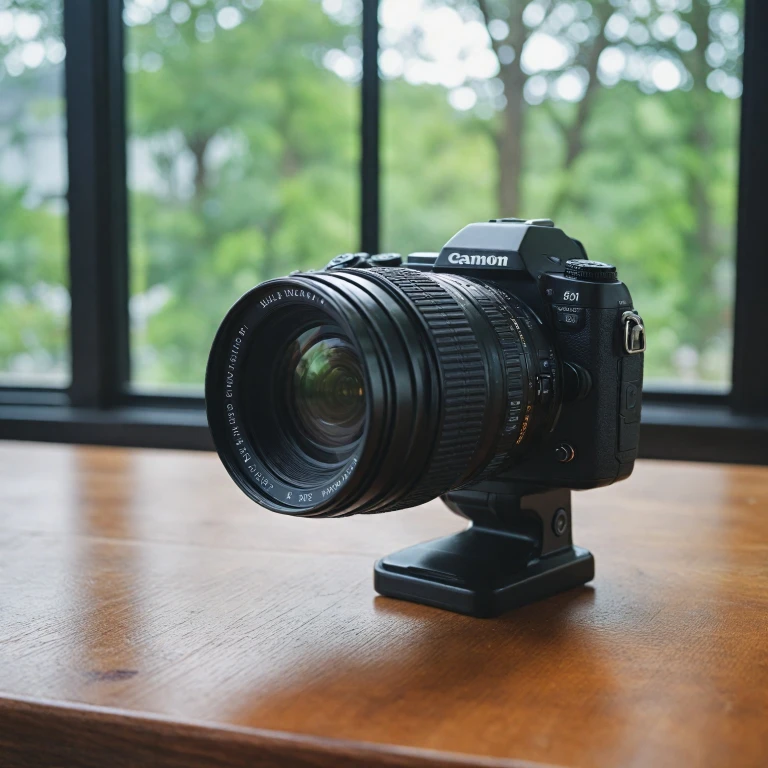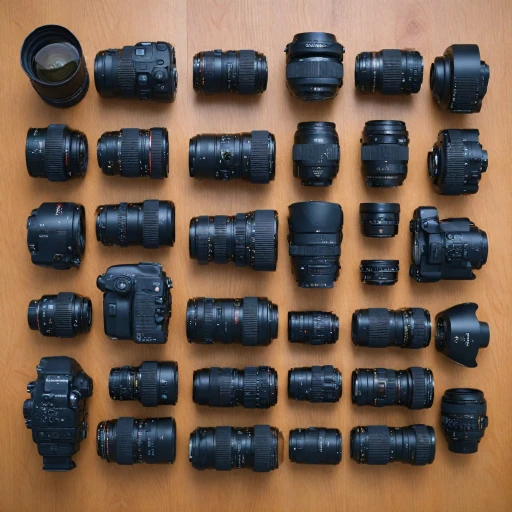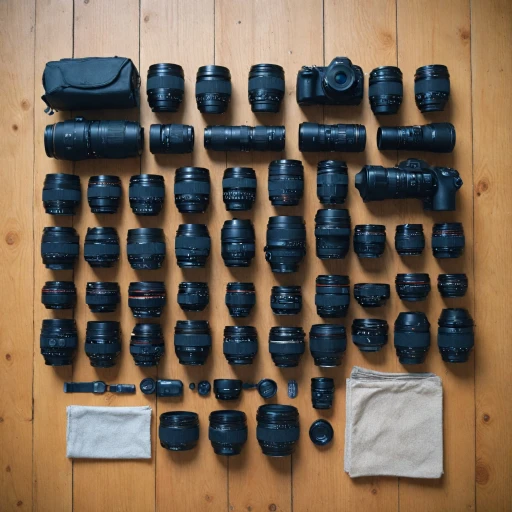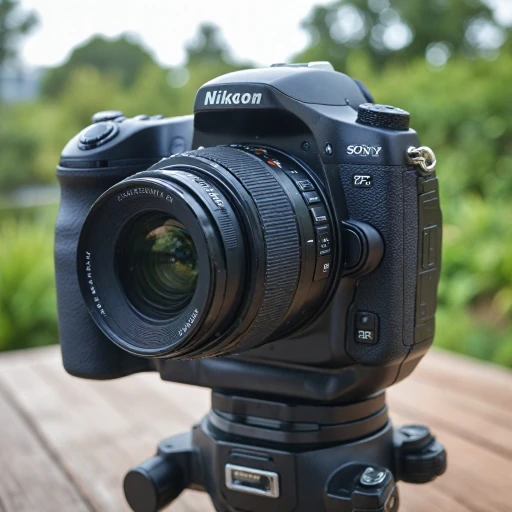Overview of the Nikon 500mm f/4 lens
The evolution of a super telephoto marvel
In the realm of advanced photography, the Nikon 500mm f/4 lens holds a special place as a coveted super telephoto lens. Known for its remarkable capabilities in capturing distant subjects with precision and clarity, this lens is an iconic piece for nature and sports photographers. Its design and engineering reflect Nikon's dedication to delivering high-quality optics, making it a favorite among professionals who aim for extraordinary images.
A distinguished choice for serious photographers
Crafted with the needs of serious photographers in mind, the Nikon 500mm f/4 lens is part of Nikon's esteemed Nikkor lineup. This series of lenses is celebrated for its performance and reliability, distinguishing itself with innovations such as Silent Wave Motor (SWM) for accurate and quiet auto focus, and Vibration Reduction (VR) to achieve sharp images even in challenging conditions. The inclusion of these features makes the Nikon lens a versatile choice, suitable for varied shooting scenarios.
Superior optics and functionality
Engineered with high-performance optics, this lens offers excellence in image quality through its sophisticated lens design and advanced lens specifications. With an expansive focal length of 500mm and a wide aperture of f/4, it provides a full range of creative possibilities, ensuring precise focus and superior image results. These characteristics set it apart from standard lenses, emphasizing what makes the Nikon 500mm f/4 a standout in the world of super telephoto optics.
Top competitors and alternatives
While the Nikon 500mm f/4 lens remains a prime choice, photographers often explore alternative lenses to match their specific needs. The Sigma HSM lenses are notable contenders, offering competitive specifications and mounting options. Understanding these alternatives, such as our guide to top Canon lenses for wildlife, can provide photographers with a broader perspective for making informed equipment decisions.
Key specifications and features
Detailed Insights into Its Build and Efficiency
When you delve into the lens specifications of the Nikon 500mm f/4, you'll uncover a host of features that cater to professional photographers. The lens's build quality is exceptional, embodying durability and precision that define the Nikkor series. Not only is it a fine telephoto lens, but it also integrates advanced optics that maximize performance when paired with Nikon cameras.
The auto focus mechanism is notably refined through the inclusion of Silent Wave Motor (SWM) technology. This propels the focus speed to be both quick and quiet, making it ideal for wildlife or sports photography where discretion is essential. Moreover, the lens supports manual focus for photographers who prefer a hands-on approach.
- Vibration Reduction (VR) technology is an integral component, stabilizing images in shaky conditions.
- Its focal length and aperture of f/4 allow clear capture even in challenging lighting.
- The lens boasts a fluoride glass element, minimizing distortion and aberration, resulting in sharp, high-quality images.
- The full frame capability ensures compatibility with a broad range of Nikon’s professional-grade cameras.
For those contemplating between brands, comparing to its sigma hsm counterparts, the Nikon stands out with its higher precision focus and premium construction. More insights can be gleaned by exploring our detailed comparison guide which evaluates different lens choices.
Performance in various shooting conditions
Shooting Conditions and the Nikon 500mm f/4's Performance
The Nikon 500mm f/4 lens truly excels as a super telephoto option, making it invaluable for capturing crisp images. It effectively pairs high-end specifications with adaptive technology, catering to varied shooting scenarios. In wildlife photography, where fast-moving subjects are the norm, this lens's auto focus and silent wave motor prove their worth. The focus acquisition is swift, ensuring minimal chances of missing the perfect shot. Its impressive vibration reduction (VR) further enhances stability, reducing motion blur and providing a notable edge when shooting handheld or in low light conditions. This is complemented by the lens's narrow angle view, which helps zero in on distant subjects with precision. When used for sports photography, another area that demands rapid focus, the lens specification ensures that the Nikkor lens works hand-in-hand with Nikon's newer camera models. Users report that the lens's performance harmonizes well, thanks, in part, to its comprehensive compatibility with the Nikon mount systems, elevating both the image quality and overall experience. Moreover, the constant and wide f/4 aperture is a critical component for shooting under changing lighting environments, such as late afternoons or early mornings. It offers consistent performance across the focal length, thereby ensuring reliable image brightness and quality irrespective of conditions. Additionally, photographers who indulge in landscape or architectural photography will appreciate its sharp focus over long distances. Its manual focus option assists those who prefer explicit control over every aspect of their image capturing. Compatibility is further enhanced with Nikon's full frame and DX formats, making this lens versatile for a range of shooting situations, whether paired with standard or advanced Nikon cameras. While experimenting with this Nikkor Nikon lens, it's advisable to use high-capacity storage to handle the exquisite detail captured. For insights on memory compatibility, check out the best memory cards for your Sony A7V. In conclusion, the Nikon 500mm f/4 stands as a testimony to engineering prowess in the sphere of super telephoto lenses, promising to meet various professional needs with its array of features.Compatibility with Nikon cameras
Ensuring Compatibility Across Nikon Platforms
The Nikon 500mm f/4 lens, a prized asset in the arsenal of many photographers, seamlessly aligns with a range of Nikon cameras, enriching them with distinct capabilities. This super telephoto lens is particularly geared for compatibility with full frame cameras. It is engineered with specifications that align with Nikon's high standards.
One key aspect that ensures this compatibility is the mount. This lens uses the Nikon F-mount, which has been a staple in the Nikon lineup, providing photographers with the precision and reliability sought after in high-quality photography. The sturdy construction of the mount paves the way for optimal performance, ensuring stable connection and smooth communication between the lens and the camera body.
Moreover, the lens is designed to leverage Nikon's advanced technologies such as Silent Wave Motor (SWM) for silent and speedy autofocus, enhancing the shooting experience for those using Nikkor lenses. With its vibration reduction feature, photographers can shoot sharper images even in challenging conditions, adding a layer of reliability to its performance.
In terms of lens review, many users vouch for the unparalleled image quality this Nikkor lens affords, thanks to its seamless integration with Nikon's camera systems. Additionally, the compatibility extends to an array of accessories, allowing for further customization and versatility in various shooting scenarios.
While its focal length and aperture are sufficient to cater to both amateur and professional engagements, this lens stands out when partnered with Nikon's flagship cameras, unleashing its full potential—be it in capturing macro details or distant wildlife. For photographers who covet precision and dependability, the Nikon 500mm f/4 is indeed a vital component compatible with the robust suite of Nikon cameras.
Comparing the 500mm f/4 with other lenses
Evaluating Alternatives in the Lens Market
When it comes to super telephoto lenses, the Nikon 500mm f/4 stands out for its impressive specifications and performance. However, photographers often consider other lens options, taking into account factors such as focal length, aperture, and autofocusing capabilities.
Here's how the Nikon 500mm f/4 lens compares with other prominent lenses in its category:
- Sigma 500mm f/4.5 HSM: Often compared by users due to its slightly smaller maximum aperture, this Sigma lens still offers robust performance. It’s lighter and can be a bit more affordable, yet lacks some of the sophisticated vibration reduction features found in the Nikon 500mm.
- Nikkor 600mm f/4: For those needing a little more reach, this lens provides a longer focal length. It’s ideal for sports and wildlife photography but comes with an increased size and weight, impacting portability.
- Nikkor AF-S 400mm f/2.8: Offers a wider maximum aperture, excellent for low-light conditions. Though it sacrifices some focal length, it benefits photographers requiring high shutter speeds without compromising image quality.
All considered, the choice between these lenses largely depends on individual shooting needs and preferences, illustrating the crucial role of a lens review and comprehensive analysis of lens specifications. Each product has its unique strengths and trade-offs, ensuring that photographers have options when selecting the optimal lens for their specific type of camera work.












